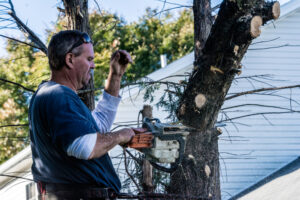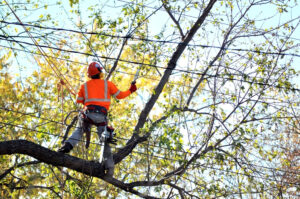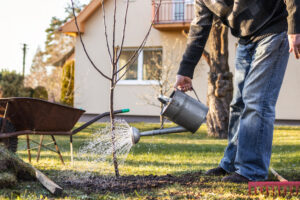Protecting Your Trees: A Comprehensive Guide to Spotting and Handling Diseases and Pests During Tree Trimming
Tree trimming isn’t just about shaping and beautifying; it’s a crucial aspect of tree care that directly impacts their health and vitality. Amidst the pruning and shaping, it’s imperative to remain vigilant for signs of diseases and pests. Neglecting these issues can lead to severe consequences, ultimately jeopardizing the well-being of your beloved trees. In this guide, we delve into the importance of spotting and addressing diseases and pests during tree trimming, ensuring your trees thrive for years to come.
Identifying Diseases
Common Diseases in Trees
Trees, like all living organisms, are susceptible to a range of diseases. Some of the most prevalent ones include:
- Fungal Infections: Such as powdery mildew, anthracnose, and root rot, which can weaken the tree’s structure and inhibit growth.
- Bacterial Diseases: Like fire blight and bacterial leaf scorch, causing wilting, leaf discoloration, and eventual death if left untreated.
- Viral Infections: These are less common but can lead to stunted growth, distorted foliage, and overall decline in tree health.
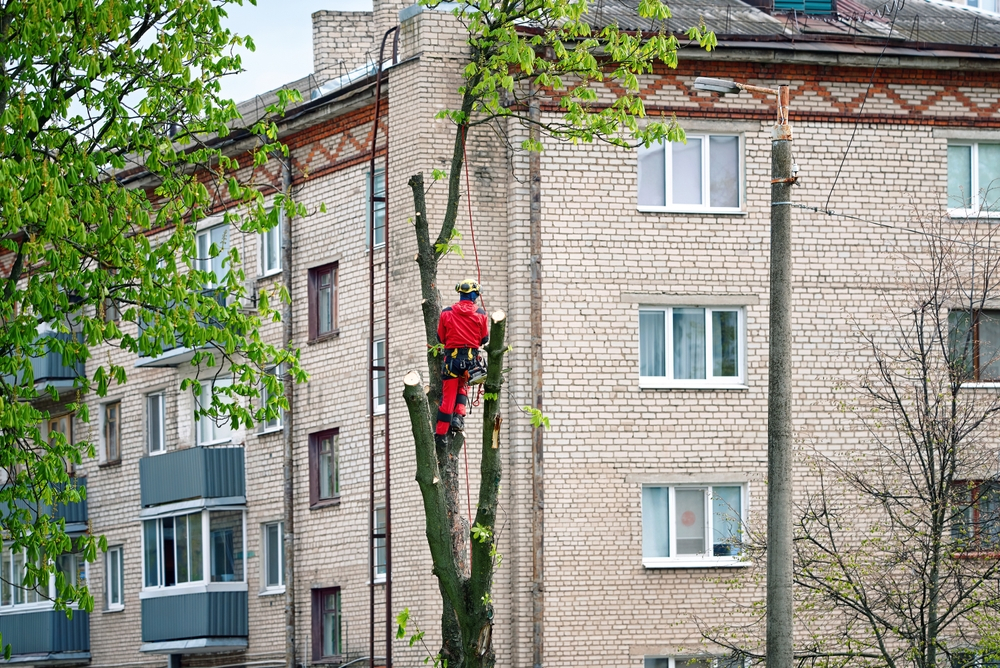
Signs of Disease during Tree Trimming
During tree trimming sessions, keep a keen eye out for telltale signs of disease, including:
- Discolored or Wilting Leaves: Often indicating nutrient deficiencies or fungal infections.
- Cankers or Lesions: Abnormal growths on the bark, signaling bacterial or fungal infections.
- Premature Leaf Drop: A sign of stress, possibly caused by disease or pest infestation.
How to Properly Handle Diseased Trees
If you suspect your tree is diseased, prompt action is crucial:
- Prune Affected Branches: Remove any diseased branches using sterilized tools to prevent further spread.
- Dispose of Debris: Properly dispose of pruned branches to prevent the spread of pathogens.
- Apply Fungicides or Antibiotics: In severe cases, consult with an arborist and consider using treatments to combat the disease.
Dealing with Pests
Types of Pests that Can Affect Trees
Pests pose a significant threat to tree health, with common offenders including:
- Insects: Such as aphids, beetles, and borers, which feed on foliage and weaken the tree’s defenses.
- Mites: These tiny arachnids can cause extensive damage to leaves and buds.
- Rodents and Birds: Gnawing on bark or pecking at branches, leading to structural damage and disease transmission.
Indicators of Pest Infestation during Tree Trimming
Spotting pests during tree trimming requires attention to detail:
- Chewed or Damaged Foliage: Evidence of insect or rodent activity.
- Sap or Residue: Left behind by pests like aphids or scale insects.
- Holes or Galleries in Bark: Indicative of borers or wood-boring insects.
Steps to Take if Pests are Found
Combatting pests requires a strategic approach:
- Integrated Pest Management (IPM): Implement a holistic approach that includes cultural, biological, and chemical control methods.
- Prune Infested Branches: Remove heavily infested branches to prevent the spread of pests.
- Use Natural Predators: Introduce beneficial insects or birds that prey on pest populations.
- Apply Targeted Treatments: Utilize insecticidal soaps, oils, or pesticides as a last resort, ensuring minimal impact on beneficial organisms.
Prevention is Key
Importance of Preventative Measures
Prevention is always preferable to treatment:
- Maintains Tree Health: Proactive measures keep trees robust and resilient against diseases and pests.
- Saves Time and Resources: Preventing infestations eliminates the need for costly treatments and repairs.
- Preserves Ecosystem Balance: Minimizing pesticide use preserves beneficial insects and promotes a healthy ecosystem.
Tips for Keeping Trees Healthy and Free of Diseases and Pests
Maintaining tree health begins with proper care:
- Regular Watering: Adequate moisture prevents stress and susceptibility to pests and diseases.
- Mulching: Helps retain moisture, regulates soil temperature, and suppresses weed growth.
- Pruning: Remove dead or diseased branches to improve airflow and prevent pest harborage.
- Soil Care: Fertilize as needed and ensure proper drainage to promote root health.
Regular Maintenance and Inspection
Consistent monitoring is essential for early detection:
- Scheduled Inspections: Conduct routine checks for signs of diseases, pests, or structural issues.
- Seasonal Pruning: Trim trees during dormant seasons to minimize stress and maximize recovery.
- Soil Testing: Assess soil nutrient levels and pH to optimize tree health and vitality.
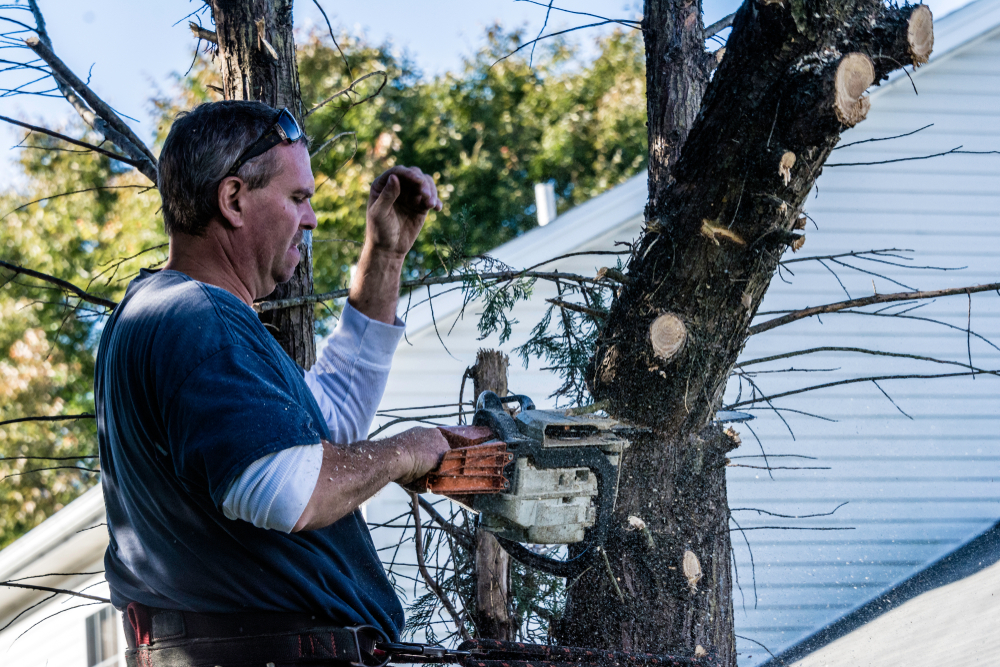
Professional Help
When to Seek Help from a Tree Trimming Expert
Certain situations warrant professional intervention:
- Severe Infestations: Extensive pest damage or widespread disease infections may require specialized treatment.
- Structural Concerns: Leaning trees, cracked branches, or root damage necessitate the expertise of an arborist.
- Uncertain Diagnosis: If you’re unsure about the nature of a tree problem, consulting an expert ensures accurate assessment and appropriate action.
Choosing the Right Professional
Selecting a qualified arborist is crucial for optimal tree care:
- Credentials: Look for certified arborists with credentials from reputable organizations like the ISA (International Society of Arboriculture).
- Experience: Prioritize professionals with extensive experience and a track record of successful tree care.
- Insurance and Licenses: Ensure the arborist is adequately insured and licensed to perform tree trimming and related services.
Benefits of Hiring a Professional
Enlisting professional assistance offers numerous advantages:
- Expertise and Knowledge: Professional arborists possess specialized expertise in tree care, ensuring proper diagnosis and treatment.
- Safety: Professional tree trimmers are equipped with the necessary tools and training to safely handle tree maintenance tasks.
- Cost-Effectiveness: Timely intervention by a professional can prevent costly damages and long-term issues.
Conclusion
In conclusion, prioritizing the health and well-being of your trees requires proactive measures and vigilance. By identifying and addressing diseases and pests during tree trimming, you can safeguard your trees against potential threats and ensure their longevity. Remember, prevention is key, and seeking professional help when needed can make all the difference. With proper care and attention, your trees will thrive, enriching your landscape for generations to come. Happy tree trimming!

